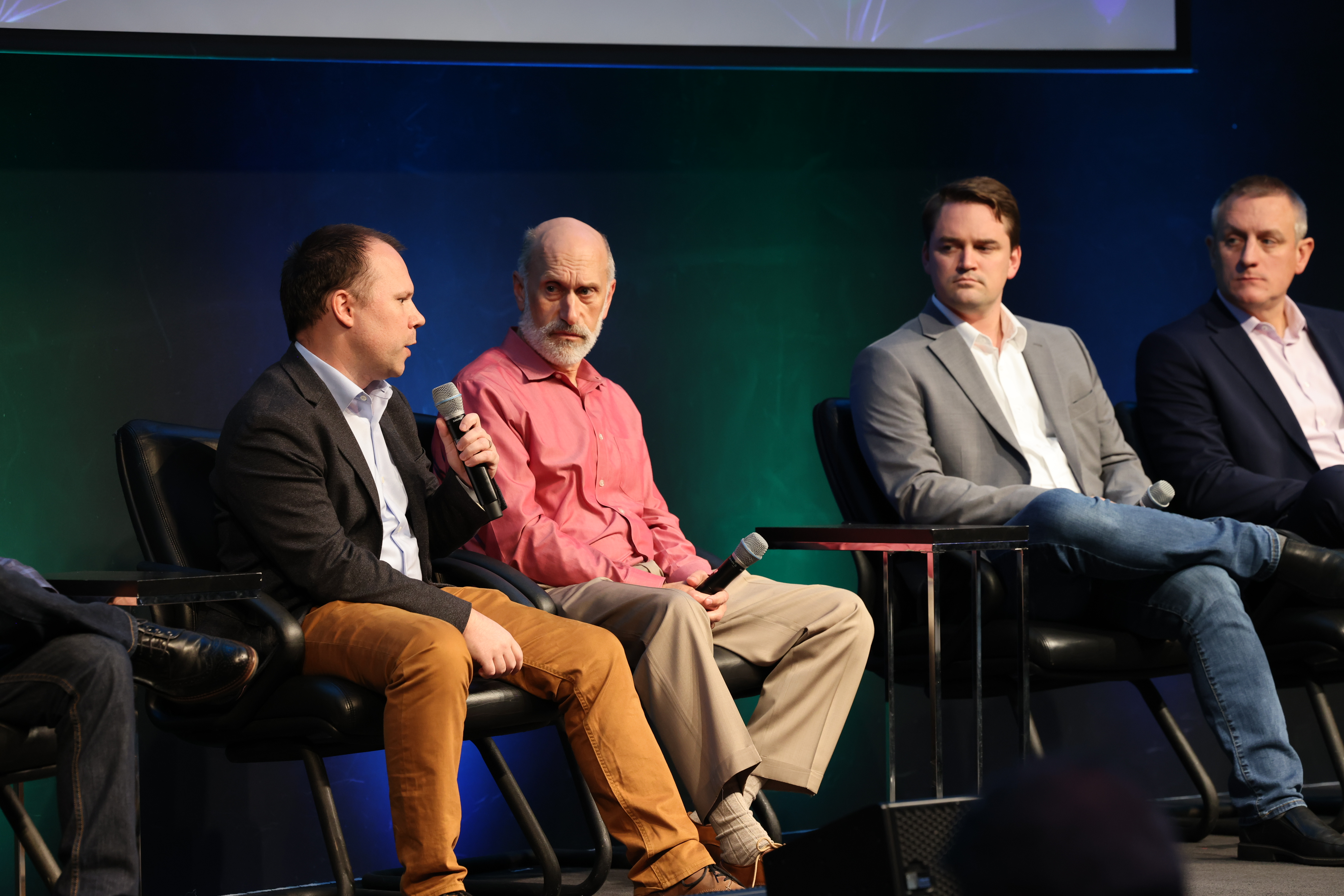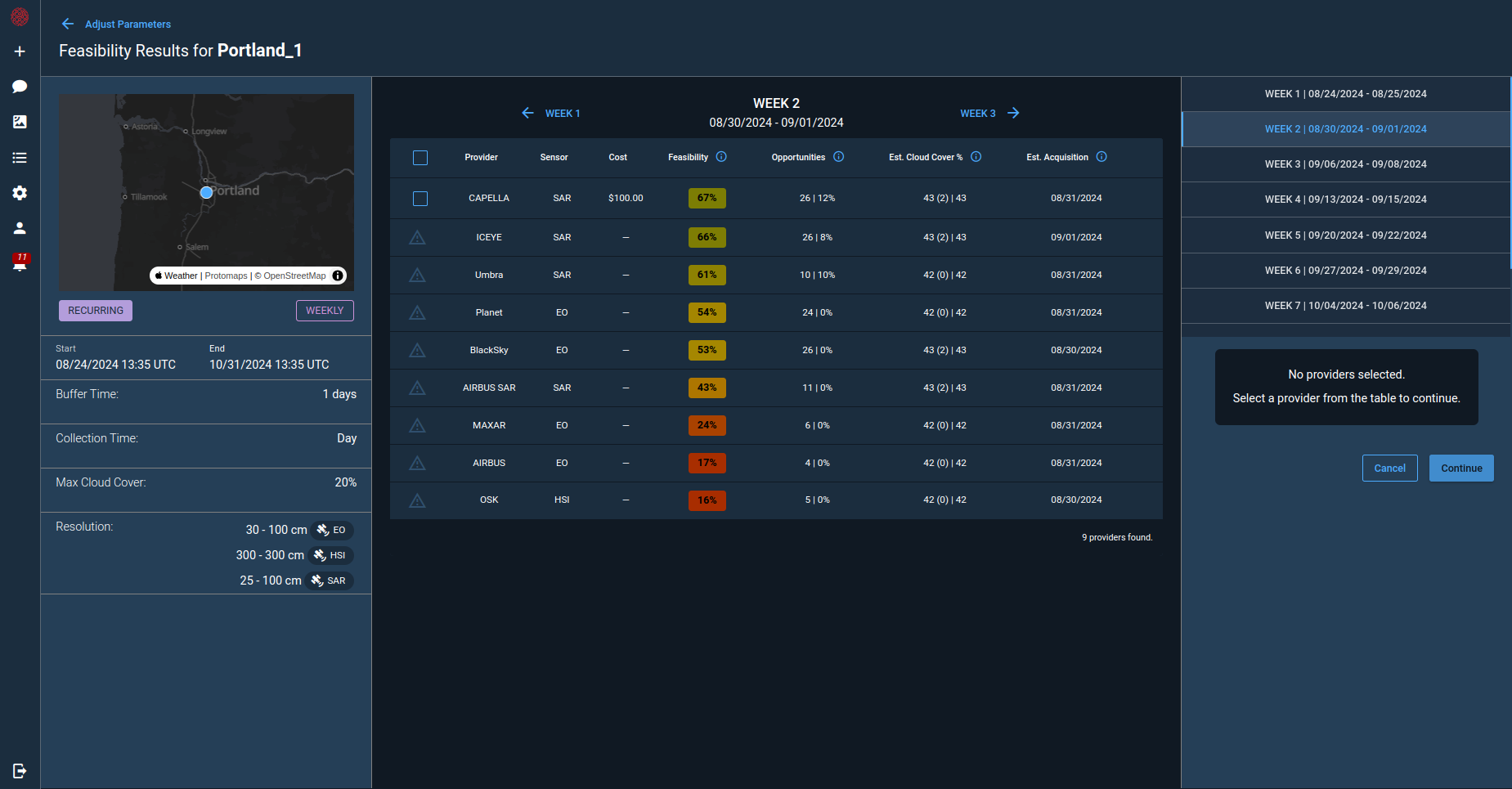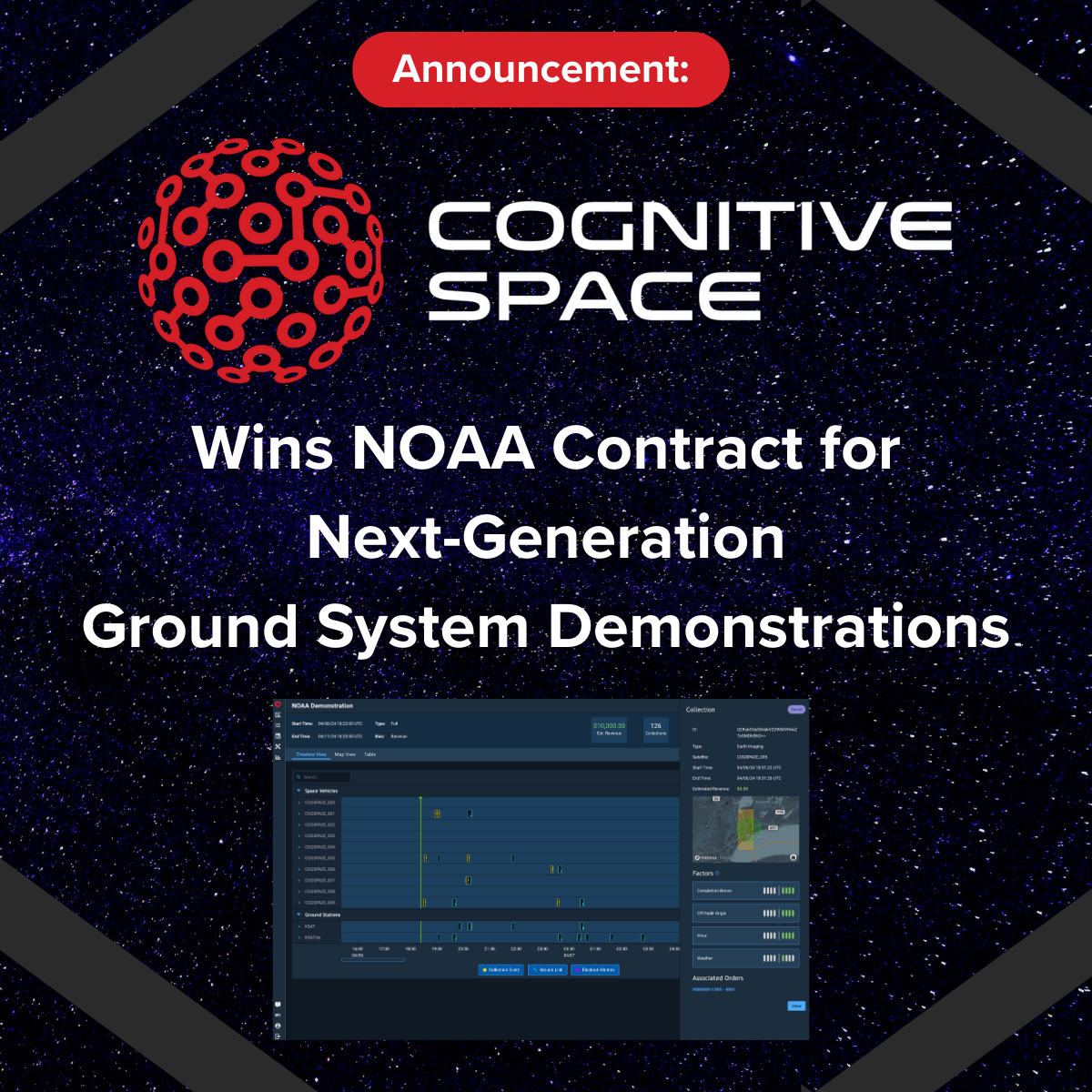AI, ML, and Cloud Computing Innovations in the Satellite Industry: A Reflection of Silicon Valley Space Week 2023
In the satellite industry, few events carry the same weight as Silicon Valley Space Week (SVSW) as a forum for collaboration on technical advancements for both business and national space defense planning and systems.
During the 2023 Satellite Innovation and Milsat Symposium events, Cognitive Space CEO and Founder, Guy de Carufel, sat down with other industry experts on panels to discuss topics ranging from AI, ML, and cloud computing tools for intelligent data exploitation to the integration of cloud computing and AI advantages into theater operations.
The panels were moderated by Dr. Eric Anderson, President of And One Technologies, and Adam Keith, Affiliate Principal Advisor at Euroconsult. Here we summarize Guy’s contributions to the panel discussions and questions at the events.

2023 MILSAT Symposium: Integrating Cloud Computing and AI Advantages into Theater
Tell us a bit about Cognitive Space.
Cognitive Space is an AI SaaS solution that addresses satellite operations to empower the use of space through AI. Our core objectives revolve around reducing latency in operations and enhancing the yield of satellite systems. While AI’s role in space is commonly associated with image analysis, our primary focus is on streamlining the decision-making processes within the satellite industry through automation.
What obstacles exist regarding latency, data volume, and complexity that surpass human management capabilities?
The challenges posed by latency, data volume, and complexity extend beyond human management capabilities, especially when dealing with a growing number of satellites. As the satellite fleet expands, the complexity grows exponentially. This intricacy intensifies as satellites become more capable and require precise tasking. The system adds another layer of complexity where it operates in areas with oversubscribed tasking demands.
In this landscape, balancing the collection plans of the satellite network with the diverse demands of customers, some of whom require near real-time imagery, becomes a daunting task. This often leads to pre-emption of other previously planned tasks. Furthermore, managing bottlenecks in downlink capacity, navigating the limitations of ground station networks, and coordinating pass scheduling and link management while ensuring customer satisfaction all contribute to a highly complex problem, ****and that planning and scheduling problem is what we’re addressing with AI.
What AI tools does Cognitive Space use?
We’ve been actively involved in developing AI systems for the past five years, with a particular focus on decision-making processes. Large Language Models (LLMs) have captured our interest, especially in the context of automation for machine-to-machine communication.
What’s particularly intriguing about LLMs is their ability to facilitate communication through query-based requests, rather than relying on specific APIs. This approach enables different systems to interact and automate various processes seamlessly. For instance, LLMs allow us to identify objects within imagery, such as ships, and trigger further actions based on the insights gained. In this way, LLMs integrate and automate different components of our system, streamlining the decision-making process.
How has the demand for space data evolved and how do you address the challenge of significantly reducing latency while managing various customer requirements and schedules effectively?
In the realm of space data and remote sensing, traditional expectations revolved around the delivery of imagery within days or even weeks. Now, particularly in the contexts of crisis response and national security, the demand for space data has accelerated to the point where it must be relevant on a tactical level, often within less than an hour or even within minutes.
To achieve reduced latency, it’s imperative to compress the full spectrum of latency, from the planning, tasking, collection, and downlinking of data. Simultaneously, it’s vital to ensure that high-priority crisis situations can be addressed while still managing the requirements of other customers and adhering to the existing schedule. The dynamic and rapid fulfillment of such demands calls for the integration of AI systems, as there is no alternative to effectively meet these evolving needs.

2023 SATELLITE INNOVATION: Wrangling the Data Firehose: ML, AI and Cloud Tools for Intelligent Data Exploitation
How do you use AI to inform critical operational timelines?
AI serves the purpose of not just automating tasks traditionally handled by human operators but also harnessing vast data resources to identify statistical correlations beyond human capability, enabling rapid and effective decision-making for missions. This quick decision-making spans both the analytical and operational aspects of the mission.
We employ AI in a way that thoroughly comprehends the technical specifications of spacecraft and the operational restrictions they must adhere to. This includes constraints such as restricted areas for data collection or limitations on data downlinking in specific countries. These bounds are integrated into our AI systems, allowing them to navigate and devise optimal solutions while operating within these established constraints. In essence, AI helps us navigate and inform critical operational timelines by working within these predefined boundaries and still achieve the maximum number of collections to satisfy the highest number of missions.
What are the specific considerations for deciding whether to perform image analysis and routing at the edge or on the ground in satellite operations?
The choice between performing tasks on the edge or on the ground in satellite operations is contingent on specific requirements and functions:
Edge Computing:
- Tasks suited for edge computing include straightforward image analysis, like cloud cover detection and basic classification. These tasks can be efficiently initiated at the edge.
- For functions where immediate response is crucial, such as routing, edge computing is preferred to ensure short latencies.
- Edge computing is especially valuable for enabling satellites to autonomously correct their course when they lose communication with ground stations.
Ground Computing:
- Centralized tasks that require a comprehensive view of a satellite fleet’s operations and mission priorities are better suited for ground computing.
- Functions like coordinating assets across the fleet and overseeing the entire mission pipeline, including task prioritization and adjudication, are complex and centralized operations that benefit from the resources and capabilities of ground-based computing.
Edge computing is valuable for quick, localized tasks, while ground computing is essential for centralized, mission-level coordination and management. The choice between the two depends on the specific needs of the satellite operation.

2023 MILSAT Symposium: Integrating Cloud Computing and AI Advantages into Theater
Fast forward to the year 2040, what significant advancements will AI have facilitated?
By 2040, what we presently refer to as “machine-to-machine” interactions will look very different. Instead of simple communication between machines, it will involve two distinct entities: two sophisticated software systems interfacing with hardware. These systems will engage in reasoning, seamless data exchange, and collaborative decision-making. The future promises a level of machine intelligence and autonomy that will significantly surpass our current capabilities. In 2040, we’ll be there.
Contact Cognitive Space to automate your satellite operations.







